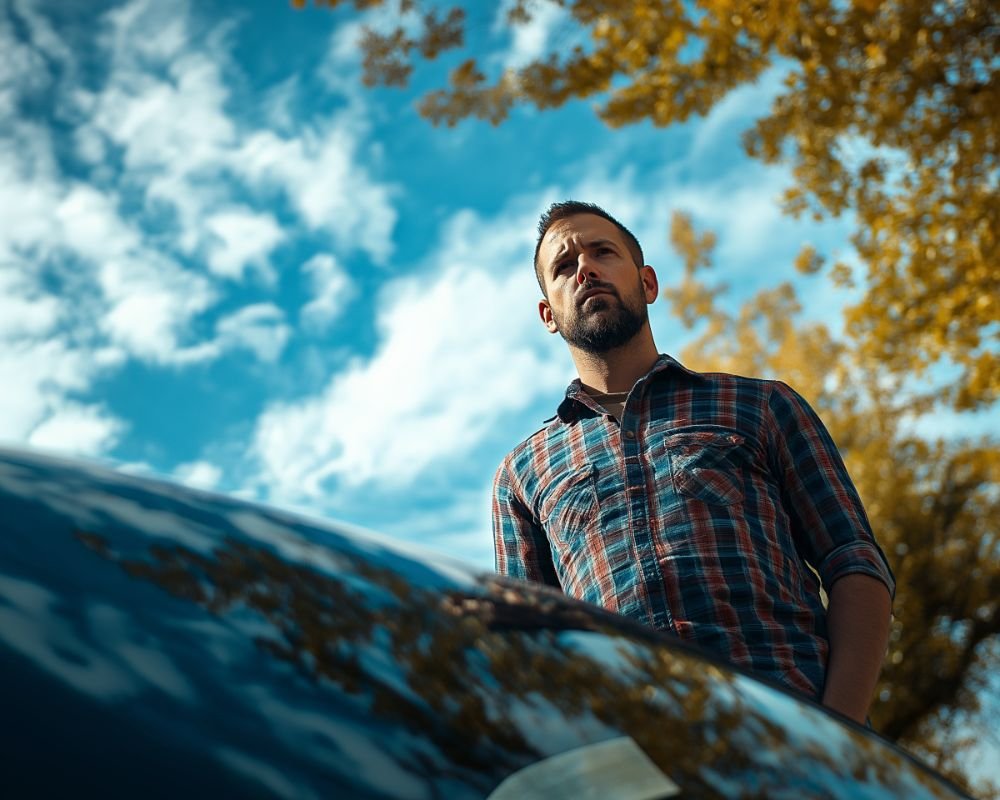
85% of Men Are Bisexual or Bi-Curious: Understanding the Spectrum of Male Sexuality
The idea that Most men are bisexual or bi-curious is not just a statistic; it challenges long-held assumptions about male sexuality. For decades, society has placed men into rigid categories of being either heterosexual or homosexual. However, recent research shows that male sexuality is far more fluid than previously thought, with most men falling somewhere on the bisexual or bi-curious spectrum. This concept redefines how we view male desire and attraction, acknowledging that men’s sexual interests may not always be confined to traditional labels.
This blog delves deep into what it means when we say 85% of men are bisexual or bi-curious, exploring history, religion, societal norms, situational sexuality, and research. From ancient times to modern-day prisons, we’ll investigate the factors that contribute to male bisexuality and bi-curiosity, while also examining how certain environments shape male sexual behavior. By the end, we will better understand male sexual fluidity and why most men are, in fact, bisexual or bi-curious.

Is Bisexuality More Common Than We Think?
To claim that 85% of men are bisexual or bi-curious suggests that most men do not fit neatly into the categories of “straight” or “gay.” Rather, male sexuality operates on a spectrum where men may experience attraction to both men and women, even if they primarily identify as heterosexual.
Bisexual men are those who are sexually attracted to both genders, while bi-curious men may experience occasional or situational attractions to other men without fully identifying as bisexual. This distinction is important because it shows that sexual orientation is not fixed for many men, but rather fluid and subject to change over time.
A study conducted by Dr. Ritch Savin-Williams, a developmental psychology professor at Cornell University, found that many men who identify as straight report feelings of attraction to other men at various points in their lives. This supports the idea that 85% of men are bisexual or bi-curious, suggesting that sexual fluidity is more common than once thought.
Advertisement · Scroll to continue
Recommended
Historical Context: Bisexuality in Men Throughout the Ages
The idea that Most men are bisexual is not a new phenomenon. Throughout history, men have engaged in same-sex relationships while also maintaining relationships with women. These behaviors were often accepted, and in some cases, celebrated. Understanding how male bisexuality and bi-curiosity were viewed in different cultures helps shed light on why sexual fluidity is so prevalent today.
Ancient Greece and Rome
In ancient Greece and Rome, bisexuality was common, particularly among men of higher status. Greek men were often involved in pederasty, a socially accepted relationship between an older man and a younger male. These relationships were not viewed as contradictory to marriage and family life with women but were seen as part of a broader sexual spectrum. Similarly, Roman men frequently engaged in same-sex relationships without these behaviors defining their overall sexual identity.
This historical context supports the idea that 85% of men are bisexual or bi-curious, as men in these societies were not confined to rigid definitions of sexual orientation. Instead, they freely explored their desires in a culture that allowed for sexual fluidity.
Native American Two-Spirit Tradition
Many indigenous cultures also embraced a more fluid understanding of sexuality. The Two-Spirit tradition in Native American cultures refers to individuals who embody both masculine and feminine traits, including the potential for same-sex relationships. These individuals were often revered for their unique perspective and held important spiritual roles within their communities. Again, this shows that male sexual fluidity has deep historical roots and is not limited to modern understandings of sexuality.

Religion’s Influence on Male Sexuality
Religion has played a significant role in shaping views on male sexuality. In many religious traditions, same-sex relations are condemned, leading to a suppression of bisexual or bi-curious behaviors. However, history shows that even within strict religious frameworks, men have continued to engage in same-sex relationships.
Christianity and Sexuality
In Christian doctrine, homosexuality is often regarded as sinful, with strong prohibitions against same-sex behavior. Yet, throughout history, same-sex relationships have persisted within Christian communities. For example, monks in medieval monasteries were known to engage in same-sex relationships, despite the church’s condemnation. These men lived in all-male environments, where close friendships sometimes developed into sexual relationships.
Men who face religious restrictions on sexual activity with women—such as during periods when their wives are ritually “unclean”—may also turn to same-sex encounters for sexual fulfillment. This behavior underscores the argument that 85% of men are bisexual or bi-curious, as even religious limitations cannot fully suppress natural desires.
Islam and Same-Sex Behavior
Islam, like Christianity, prohibits same-sex relationships, yet historical records show that many Muslim men engaged in same-sex behavior, particularly in regions like the Middle East and South Asia. In environments such as the military or educational institutions, where men were often segregated from women, same-sex relationships were not uncommon. This situational bisexuality demonstrates how cultural and religious constraints can shape, but not eliminate, male sexual fluidity.

Advertisement · Scroll to continue
Recommended
Situational Bisexuality: How Circumstances Shape Male Sexual Behavior
One of the strongest arguments for the idea that most men are bisexual or bi-curious is the prevalence of situational bisexuality, particularly in male-dominated environments where access to women is limited. Situational bisexuality occurs when men engage in same-sex behavior in specific contexts, even if they do not identify as bisexual outside of those situations.
Bisexuality in Prisons
Prisons are perhaps the most well-known environment where situational bisexuality occurs. Studies have shown that up to 90% of men in prison engage in some form of same-sex behavior during their incarceration. This behavior is often driven by the lack of available female partners and the need for sexual release. For many of these men, these encounters are seen as temporary and not reflective of their sexual identity outside of prison.
This phenomenon supports the idea that men are bisexual or bi-curious, as many men who engage in same-sex activity in prison return to heterosexual relationships once they are released.
The Military and Male-Dominated Spaces
The military is another environment where situational bisexuality occurs. Throughout history, men in the military have engaged in same-sex relationships due to the absence of women in their ranks. These behaviors are often situational and do not necessarily reflect the men’s sexual orientation. Similarly, all-male boarding schools, universities, and other male-dominated spaces have long been places where same-sex experimentation takes place.
Situational bisexuality in these environments reinforces the idea that men are bisexual or bi-curious, as many men’s sexual behavior is influenced by the social contexts in which they find themselves.

Research on Bisexuality and Bi-Curiosity: Supporting the 85% Claim
The claim that 85% of men are bisexual or bi-curious is supported by a growing body of research. Studies show that many men experience same-sex attractions, even if they do not identify as bisexual or gay.
The Kinsey Scale and Male Sexuality
Alfred Kinsey’s groundbreaking research on human sexuality in the 1940s and 1950s introduced the idea of a spectrum of sexual orientation. The Kinsey Scale ranges from 0 (exclusively heterosexual) to 6 (exclusively homosexual), with many people falling somewhere in between. Kinsey’s research found that a significant percentage of men reported same-sex attractions or behaviors, even if they identified as heterosexual. This supports the notion that 85% of men are bisexual or bi-curious.
Recent Studies on Male Sexual Fluidity
More recent research has continued to challenge the binary understanding of male sexuality. A study published in The Journal of Sex Research found that many men who identify as straight reported sexual fantasies or attractions involving other men. Similarly, surveys by organizations like YouGov have shown that younger generations are more likely to embrace sexual fluidity, with many identifying as bi-curious.
This research provides strong evidence that most men are bisexual or bi-curious, as it shows that male sexual attraction is not as rigid as once believed.

Men’s Nature and Openness to Same-Sex Relationships
Men’s openness to same-sex relationships, even in societies that discourage such behavior, suggests that 85% of men are bisexual or bi-curious. Male sexuality is often more fluid than traditional labels allow, and many men experience same-sex attractions throughout their lives, even if they do not act on them.
Friendship and Sexual Exploration
Many men form deep emotional bonds with their male friends, which can sometimes lead to sexual exploration. These experiences are often framed as “just experimenting,” but they suggest a deeper level of bisexuality or bi-curiosity. Even men who identify as heterosexual may find themselves attracted to or curious about their close male friends.

Interesting Facts About Bisexuality and Bi-Curiosity in Men
- Historical Acceptance: In many ancient cultures, bisexuality was not only accepted but celebrated, with men often engaging in same-sex relationships alongside heterosexual marriages.
- Situational Bisexuality: Up to 90% of men in prison engage in same-sex behavior, highlighting the fluidity of male sexuality in specific environments.
- Kinsey Scale: Alfred Kinsey’s research showed that many men fall somewhere on the bisexual spectrum, with varying degrees of attraction to both genders.
- Generational Differences: Younger generations, particularly millennials and Gen Z, are more likely to identify as bi-curious or bisexual, reflecting a broader acceptance of sexual fluidity.
- Military History: Throughout history, men in the military have engaged in same-sex relationships, often due to the absence of women in their ranks.
- Religion and Sexuality: Despite religious prohibitions, same-sex behavior has persisted in many religious societies, particularly in environments where heterosexual interaction is restricted.
- Prison Sexuality: Studies show that situational bisexuality is common in prison, with many men engaging in same-sex relationships during their incarceration.
- Psychological Research: Psychological studies suggest that many men experience bi-curiosity, even if they primarily identify as heterosexual.
- Male Friendships: Emotional closeness between male friends can sometimes lead to sexual experimentation, even if both men identify as straight.
- Sexual Fluidity: Many men report shifts in their sexual desires throughout their lives, reinforcing the idea that 85% of men are bisexual or bi-curious.

FAQs About Most men are bisexual or Bi-Curious
What does it mean that 85% of men are bisexual or bi-curious?
It means that most men experience some degree of attraction to both men and women, or are curious about exploring same-sex relationships.
Is being bi-curious the same as being bisexual?
No, being bi-curious refers to an interest in same-sex experiences, while being bisexual involves attraction to both genders.
How common is bisexuality among men?
Research suggests that **85% of men are bisexual or bi-curious**, meaning they experience varying levels of attraction to both men and women.
Why do men engage in same-sex behavior in prisons?
In prisons, men engage in same-sex behavior due to the lack of access to female partners and the need for sexual release, a phenomenon known as situational bisexuality.
Can a man be married to a woman and still be bisexual or bi-curious?
Yes, many bisexual or bi-curious men are married to women but still experience attraction to men.

How does the Kinsey Scale measure bisexuality?
The Kinsey Scale measures sexual orientation on a spectrum from exclusively heterosexual to exclusively homosexual, with many people falling in between.
What role does friendship play in bi-curious behavior?
Close emotional bonds between male friends can sometimes lead to sexual exploration, even if both identify as straight.
How does situational bisexuality differ from general bisexuality?
Situational bisexuality occurs in specific environments, like prisons or the military, where access to female partners is limited, while general bisexuality refers to consistent attraction to both genders.
What research supports the claim that 85% of men are bisexual or bi-curious?
Studies like those conducted by Alfred Kinsey and more recent surveys on sexual fluidity support the claim that most men experience bisexual or bi-curious tendencies.
Can bi-curiosity exist without acting on same-sex attraction?
Yes, many men experience bi-curiosity without ever acting on their same-sex attractions.
How does religion influence male bisexuality?
Religious prohibitions against same-sex relationships can suppress male bisexuality, but historical evidence shows that same-sex behavior persists even in religious societies.

Why do some men identify as straight but still experience same-sex attraction?
Sexual orientation is fluid, and many men who identify as straight still experience occasional attraction to the same sex.
What is the difference between bisexuality and sexual fluidity?
Bisexuality refers to attraction to both genders, while sexual fluidity describes the ability for one’s sexual orientation to change over time or depending on the situation.
How does male bisexuality challenge traditional gender roles?
Male bisexuality challenges traditional gender roles by showing that men can experience sexual fluidity and attraction to both genders without compromising their masculinity.
How common is same-sex behavior in male-dominated spaces?
Same-sex behavior is common in male-dominated spaces such as prisons, the military, and boarding schools, where situational bisexuality often occurs.
Can a man be bisexual and still have only been with women?
Yes, many bisexual men may have only had relationships with women but still experience attraction to men.
How does the concept of “Two-Spirit” support the idea of male bisexuality?
The Native American Two-Spirit tradition acknowledges that individuals can embody both male and female traits, including the potential for same-sex relationships, showing historical acceptance of bisexuality.

How do societal expectations affect men’s ability to explore bisexuality?
Societal expectations often discourage men from exploring bisexuality, but many still experience same-sex attraction, even if they do not act on it.
How does prison culture shape male sexual behavior?
In prison culture, situational bisexuality occurs due to the lack of access to women, with many men engaging in same-sex behavior as a temporary outlet for sexual desire.
How do younger generations view bisexuality and bi-curiosity?
Younger generations, especially Gen Z, are more likely to embrace sexual fluidity and identify as bisexual or bi-curious, reflecting broader societal acceptance.
What role does sexual experimentation play in men’s bisexuality?
Sexual experimentation is common among bi-curious men, allowing them to explore their attractions without necessarily adopting a bisexual identity.
How does bisexuality manifest in religious societies?
Despite religious prohibitions, bisexuality still manifests in religious societies, often in secret or situationally, particularly in environments like monasteries or military camps.
Can a man experience bisexuality later in life?
Yes, many men experience shifts in their sexual orientation later in life, exploring bisexuality or bi-curiosity as they age.

How does bisexuality differ from homosexuality?
Bisexuality involves attraction to both men and women, while homosexuality involves exclusive attraction to the same sex.
How do male friendships influence sexual exploration?
Close male friendships can sometimes lead to sexual exploration, with men engaging in bi-curious behavior even if they primarily identify as straight.
Why is it important to acknowledge that 85% of men are bisexual or bi-curious?
Acknowledging that **85% of men are bisexual or bi-curious** challenges societal norms and promotes a more inclusive understanding of male sexuality.
Can men who identify as bi-curious still maintain heterosexual relationships?
Yes, many bi-curious men maintain heterosexual relationships while still experiencing same-sex attraction or curiosity.
How does bisexuality fit into the broader LGBTQ+ community?
Bisexuality is an integral part of the LGBTQ+ community, but bisexual men often face unique challenges related to their dual attraction to both genders.
How do historical examples of bisexuality support modern understandings of male sexuality?
Historical examples of bisexuality in cultures like ancient Greece and Rome support the idea that male sexuality is fluid and not confined to modern labels.

What can we learn from the claim that most men are bisexual or bi-curious?
The claim that **85% of men are bisexual or bi-curious** teaches us that male sexuality is far more complex and fluid than previously understood, encouraging more openness and acceptance of diverse sexual experiences.
Advertisement · Scroll to continue

More Recommended
Lifting Each Other Up: How the Lesbian Community Supports its Own Businesses
“Lifting Each Other Up: How the Lesbian Community Supports its Own Businesses” The Lesbian community [...]
Out and Proud: How Gay-Owned Businesses are Making Waves in the Market
Out and Proud: How Gay-Owned Businesses are Making Waves in the Market In recent years, [...]
How to Market and Advertise My Services to the LGBT Community?
How to Market and Advertise My Services to the LGBT Community? In today’s diverse marketplace, [...]
How Lesbian Cruises Cater to All Types of Travelers: Solo, Couples and Groups
How Lesbian Cruises Cater to All Types of Travelers: Solo, Couples and Groups – Are [...]
How Do You Start Olivia Cruise or Resort Vacation?
How Do You Start Olivia Cruise or Resort Vacation? – Are you ready to embark [...]
Finding Support in the Gay Community
Finding Support in the Gay Community – As members of the LGBTQ+ community, finding support [...]
Why Your Brand / Company Should Celebrate National Coming Out Day
Why Your Brand / Company Should Celebrate National Coming Out Day – National Coming Out [...]
99 Funny Gay Jokes
99 Funny Gay Jokes – Laughter is a universal language, and humor is one of [...]
From Niche to Mainstream: The Impact of Gay-Owned Brands on Marketing Trends
From Niche to Mainstream: The Impact of Gay-Owned Brands on Marketing Trends – From Niche [...]